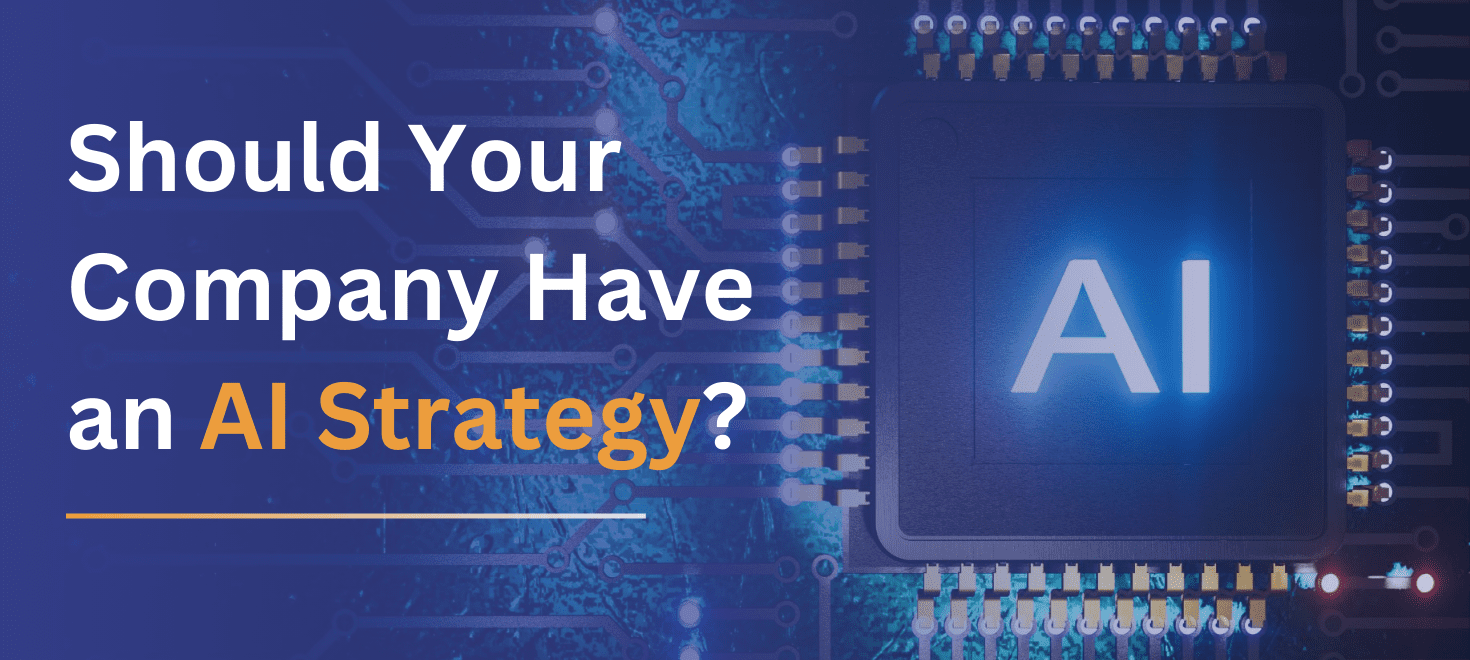Is Your AI Strategy Built on Sand?
Not long ago, I was presenting to a group of C-level executives at a major retail organization. We were discussing the potential impact of AI on their business. As someone who’s naturally curious and always focused on outcomes, I asked them a simple question: “What do you hope to achieve with AI?” One executive responded, “A better customer experience.” I followed up with, “How so?” After a brief, somewhat awkward pause, the answer came: “Better analytics on our customers.” As it happened, I had their app installed on my phone. Not only am I a consultant, but I’m also one of their customers. I opened the app and walked them through the data they already had on myself, my purchase history, personalized coupons, and the option to quickly reorder frequently purchased items. As our conversation continued, it became clear there was a strong belief that AI could transform their business. My response was, “It can, if there is a solid strategy around it.”
I’ve come across numerous articles highlighting how organizations are implementing AI and establishing AI Centers of Excellence. However, many of these efforts seem to lack a clear, cohesive strategy for how AI will actually be used to drive value. Should a company have an AI strategy? Perhaps. More importantly, I’d recommend taking a step back to first understand what capabilities, data, and processes already exist today. This includes understanding your current IT infrastructure, from your network solutions to your approach to cybersecurity. A strong foundation begins with knowing where you are before determining if the use of AI is a possibility for an organization. Jumping into AI without this groundwork is like trying to build a house on sand – the results are unlikely to be stable or sustainable.

What Data Do You Already Have?
Most organizations have data, whether in databases, data lakes, cloud storage, or scattered systems. What I’ve consistently found is that many organizations struggle to truly understand, categorize, or leverage that data effectively. Before thinking about complex AI algorithms, the first hurdle is often just getting a handle on what information exists and where it resides. Is it locked away in legacy systems? Is it distributed across various cloud services? Is there a consistent approach to cloud backup and recovery? Ensuring robust data security for this information is paramount, regardless of whether it’s stored on-premises or utilizes cloud hosting services.
In previous workshops, I’ve helped teams start by defining basic data categories and creating a “parking lot” for data that doesn’t yet fit into a clear category. As more data flows in, we revisit the parking lot, review those items, and often discover new, meaningful categories that had previously gone unrecognized. Surprisingly, many organizations are unaware of the valuable insights hidden in that unstructured or uncategorized data. Data scientists can play a critical role in this process. If they’re not equipped to do so, it’s worth engaging a trusted partner or consultant, like KNZ Solutions, who can help guide this foundational step of data discovery and organization.

What Are Your Current Capabilities?
Once you’ve established a foundational understanding of your data, the next step is to assess your current capabilities. Start by evaluating what your organization is doing today and what processes and procedures are in place. Walk through these workflows end-to-end. This exercise provides valuable insight into how your organization operates and reveals how data is currently being utilized. “Capabilities” extends beyond just workflows; it dives deep into the technology powering your business.
It also sheds light on your existing technology stack – including your data center architecture, use of cloud computing services, and the overall network security posture. At the same time, it aids in identifying where data may already be contributing to the user experience and where there may be opportunities for improvement or greater impact. Understanding the capabilities and limitations of your current infrastructure is key, especially when considering demanding AI workloads. For instance, is your data center built for the future and ready to handle the performance demands? Does your current network infrastructure have the capacity and low latency required? Are you leveraging hybrid cloud effectively, or is it creating unforeseen bottlenecks? Perhaps a strategic cloud migration is needed for certain workloads.
If you’re exploring how to ensure your infrastructure can support AI initiatives, modernizing your data center is often a critical step. We’ve actually put together a resource on this topic. You can download our free eBook, “6 Reasons to Modernize Your Data Center Network”, to learn more about preparing your infrastructure for evolving business needs, including AI.
What Real Problems Can AI Solve?
With a clearer picture of your data and technical capabilities, the conversation can shift towards identifying genuine opportunities for AI. This isn’t about finding ways to use AI; it’s about finding business problems where AI might be the best solution. Look at the workflows you mapped out. Where are the inefficiencies? Where are manual processes causing delays or errors? Where could better predictions or automation make a significant difference?
For example, instead of broadly saying “better customer experience,” perhaps the specific problem is “reducing customer service response times for common queries” or “improving the accuracy of product recommendations.” These specific problems are much easier to evaluate against potential AI solutions. Could an AI chatbot handle simple queries? Could a machine learning model generate more relevant recommendations based on purchase history and browsing data?
When Can We Start to Build AI Use Cases?
Yes, that is naturally the next step once you’ve identified those specific, well-defined problems. However, as you walk through the process of identifying potential enhancements, be sure to ask, “Does this truly require AI?” While AI can be a transformative tool, it’s essential to ensure it’s the right fit for the challenge at hand. Sometimes, a simpler automation script, a process improvement, or better utilization of existing analytics tools might be sufficient and far less complex to implement.
Partnering with a knowledgeable consultant can help guide your AI journey, ensuring alignment with business objectives, clear goals, and appropriate risk mitigation (including addressing cybersecurity concerns and ensuring robust cloud security if applicable) along the way. They can help objectively assess whether AI is overkill or the optimal approach.

Strategy First, Technology Second
In the rush to adopt AI, it’s easy to focus on the technology itself rather than the value it’s meant to deliver. While the technology is exciting, it remains merely a tool. True success begins with clearly understanding your data – its location, security posture, and overall quality. Equally important is a firm grasp of your current capabilities, encompassing your data center, cloud infrastructure, team skills, and any managed IT support structures in place. Crucially, you must define the specific problems you aim to solve and ensure they are directly tied to business value. By taking this thoughtful, foundational approach, utilizing a responsible AI framework, asking the right questions, and aligning AI with business objectives, you set the stage for AI to potentially enhance your organization. Engaging the right partners, perhaps for IT consulting, cybersecurity expertise, or ongoing operational support through a managed IT services provider, can also be instrumental. Ultimately, it’s not about implementing AI for its own sake, but using it strategically to drive meaningful, measurable outcomes.
So, should your company have an AI strategy? Absolutely, but only after completing the foundational work to ensure that strategy is built on solid ground, acknowledges the risks, and charts a clear path toward delivering real value. Having a clear picture of your starting point helps guarantee your AI efforts are built for long-term impact. Gain valuable insight into your current readiness level with our complimentary assessment.
About the Author:

Chris Price is an experienced executive deeply committed to nurturing and empowering team members to realize their fullest potential. My passion lies in technology thought leadership, and my career has been dedicated to providing guidance and leadership in aligning technology with business objectives. In recent years, we’ve observed a significant evolution in technology, particularly in digital solutions, which have the potential to differentiate businesses and confer a competitive advantage in their respective industries. In this new era of digital business, organizations must embrace transformation. Within my team, we possess the expertise to guide organizations through the disruptions brought by digital innovations, offering innovative ideas and state-of-the-art technology to navigate these changes effectively.




